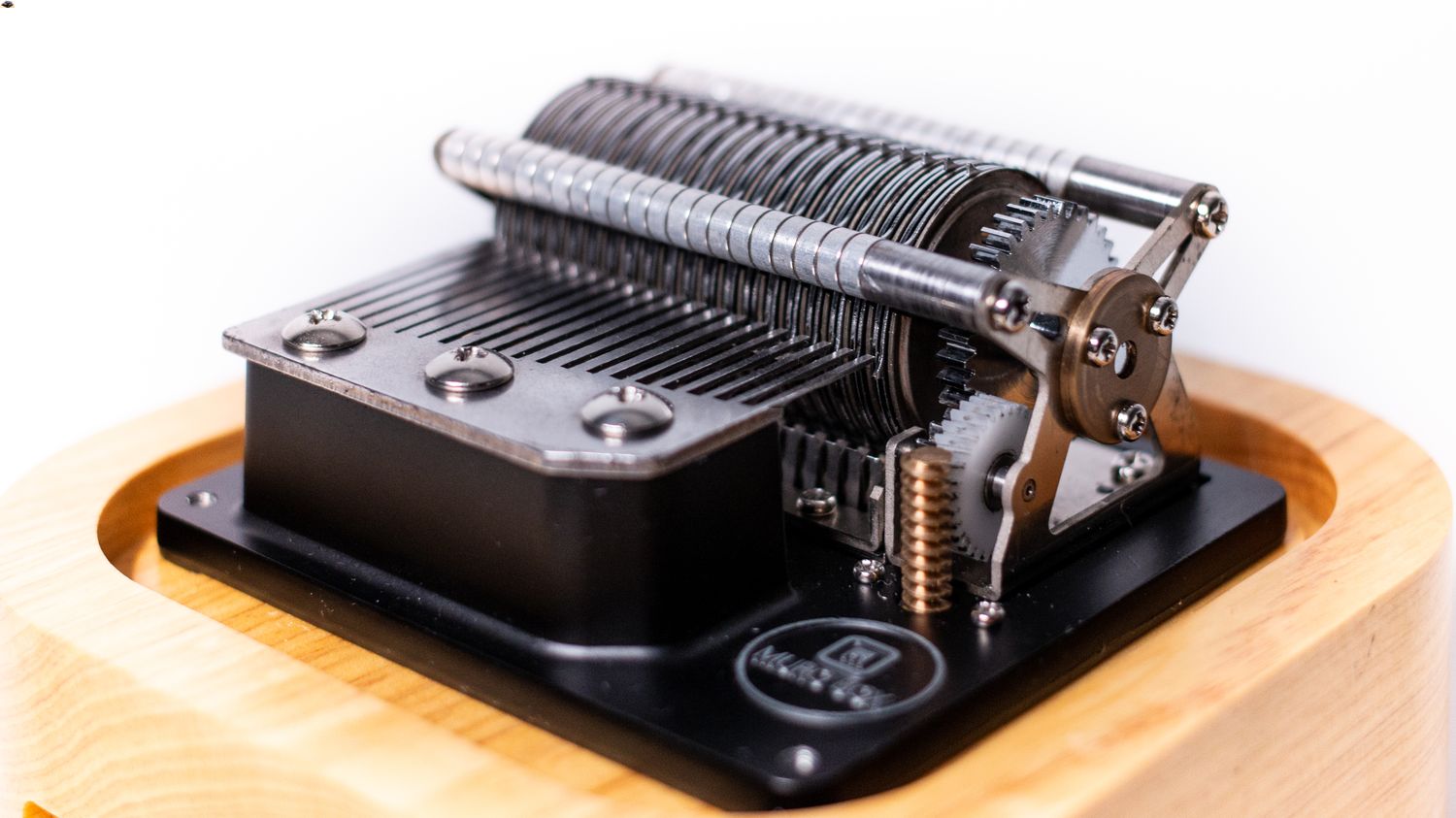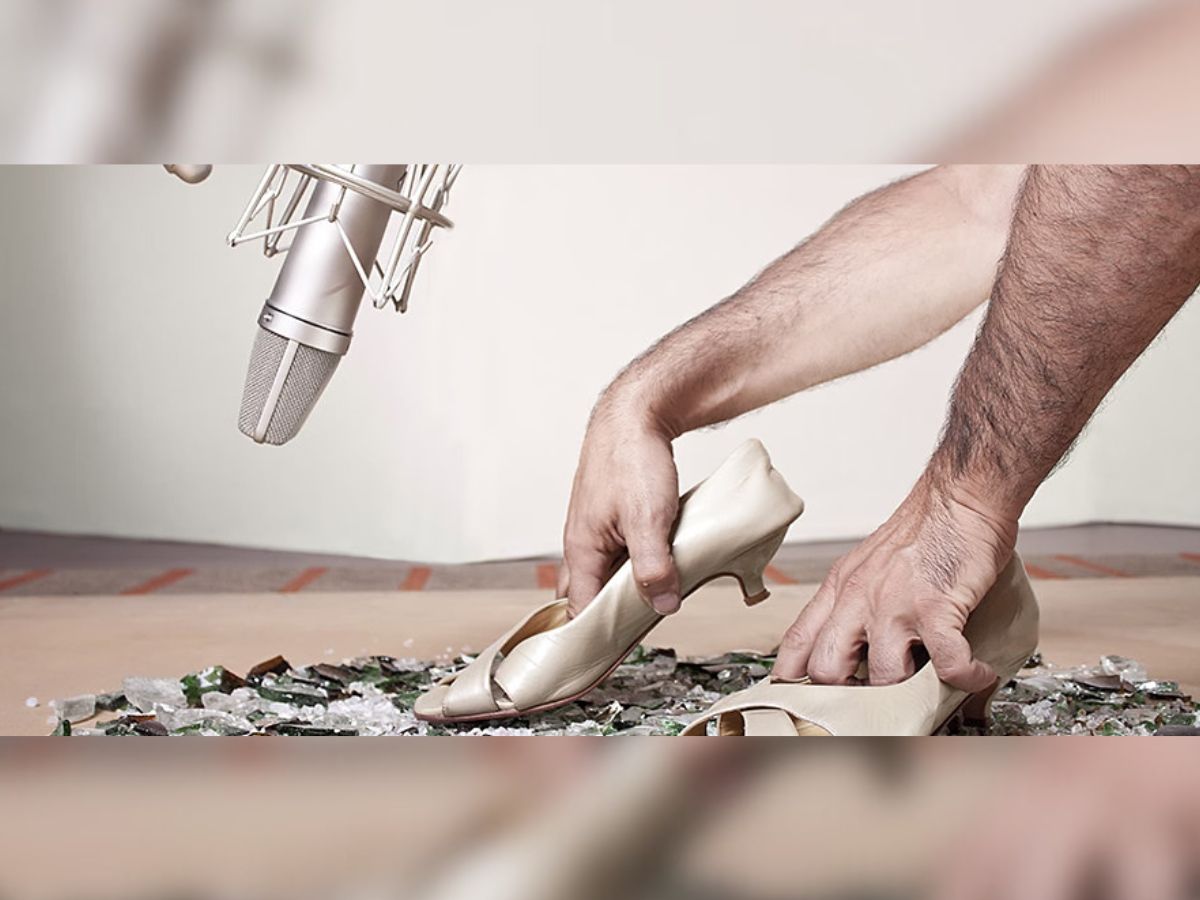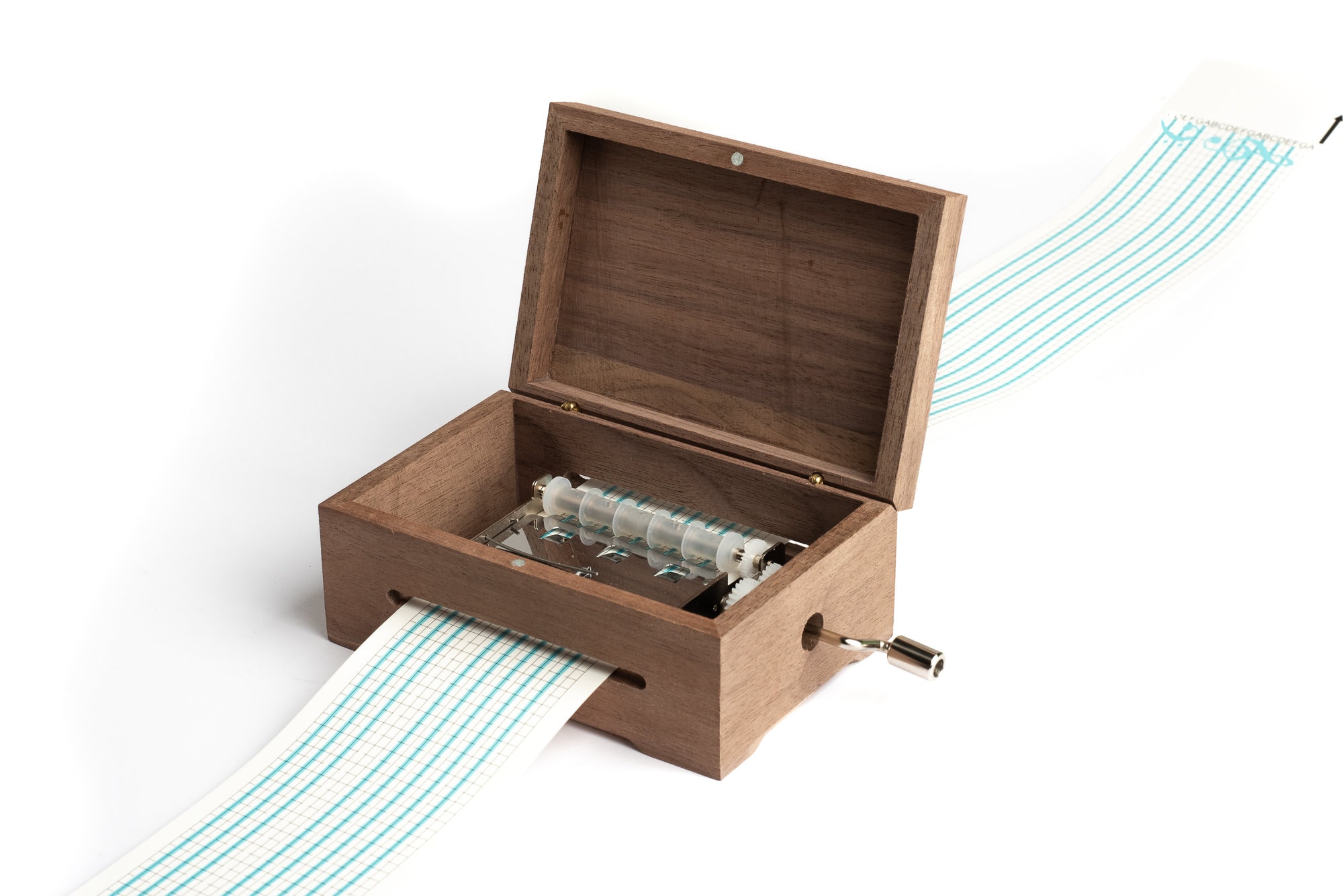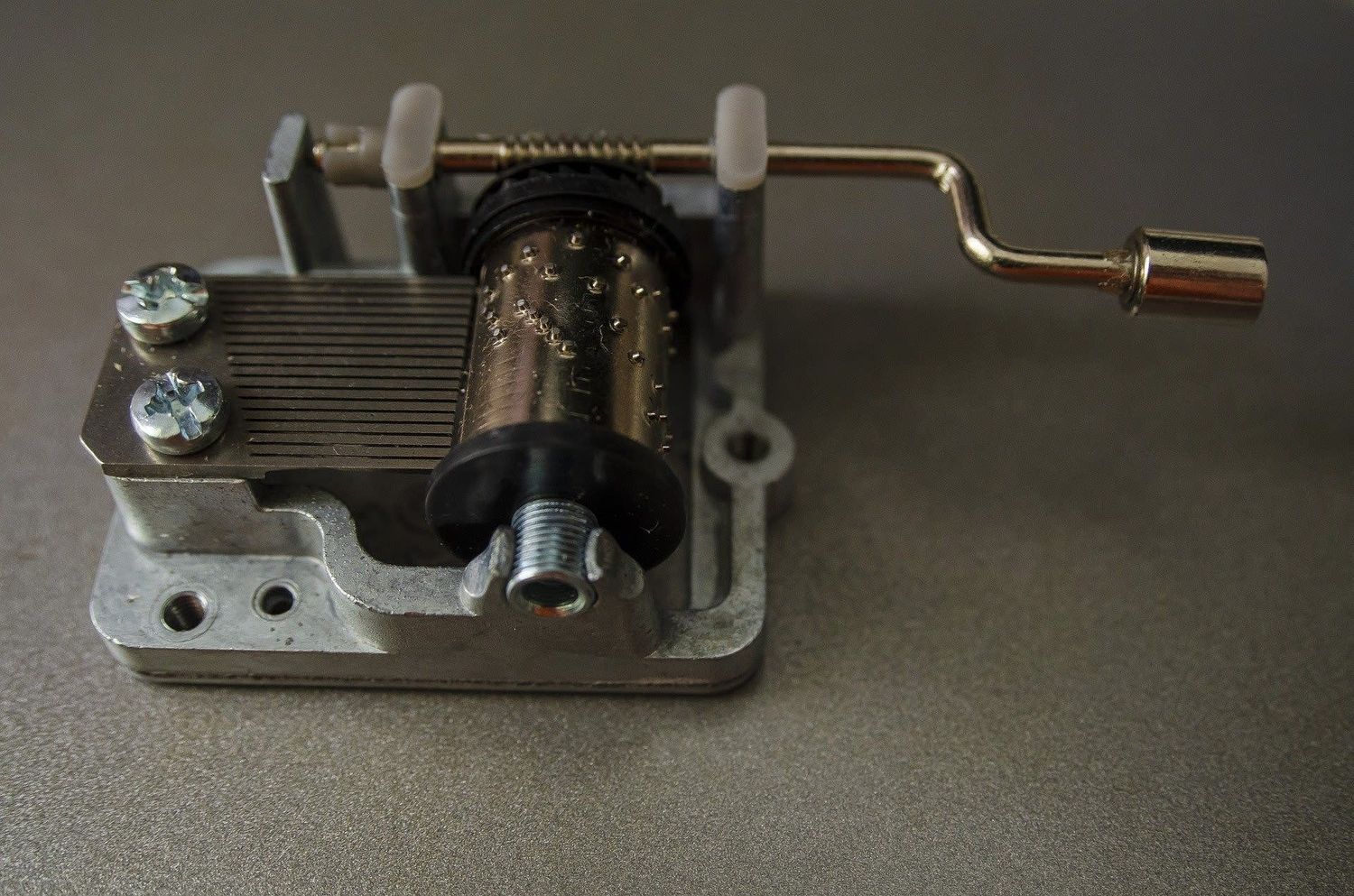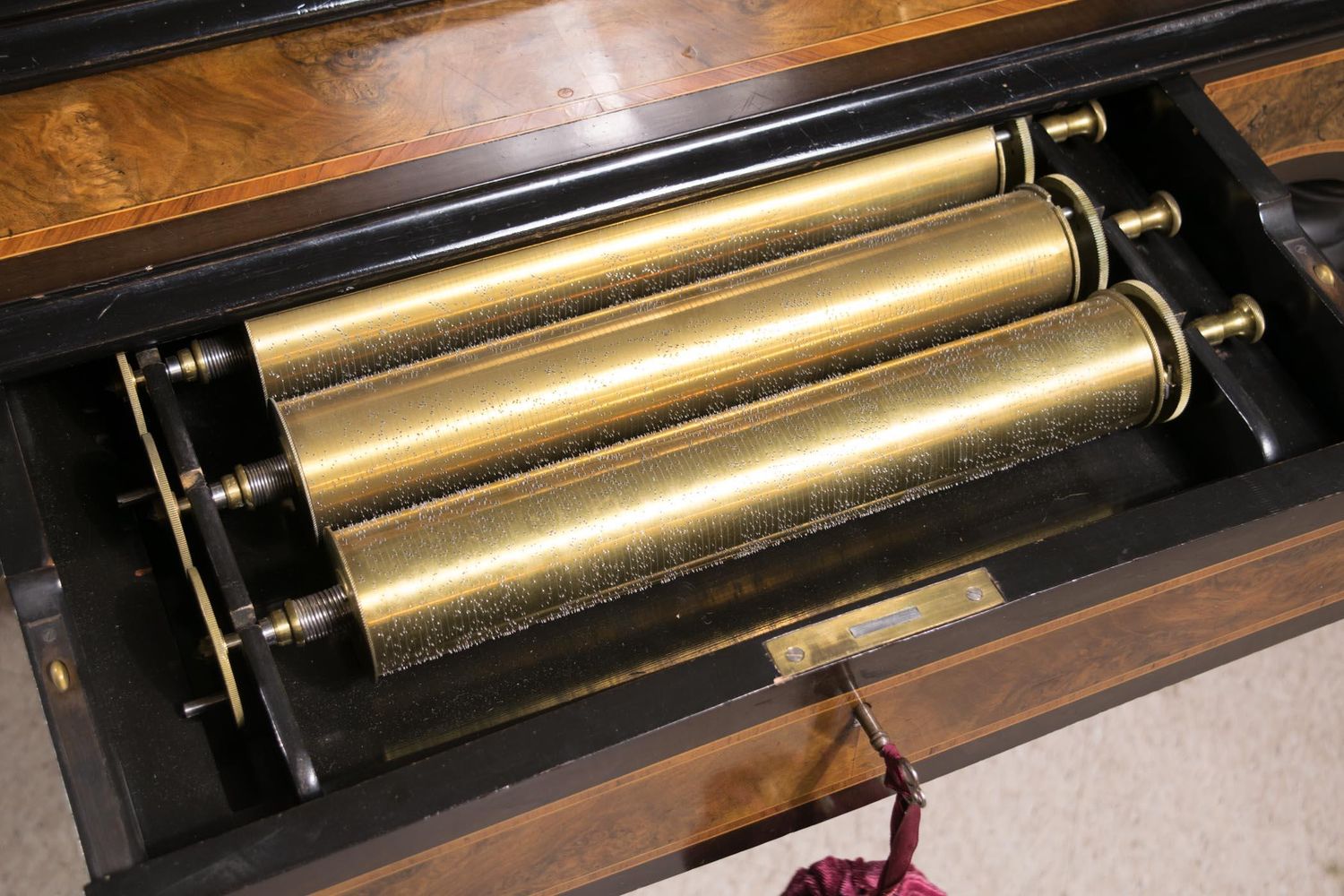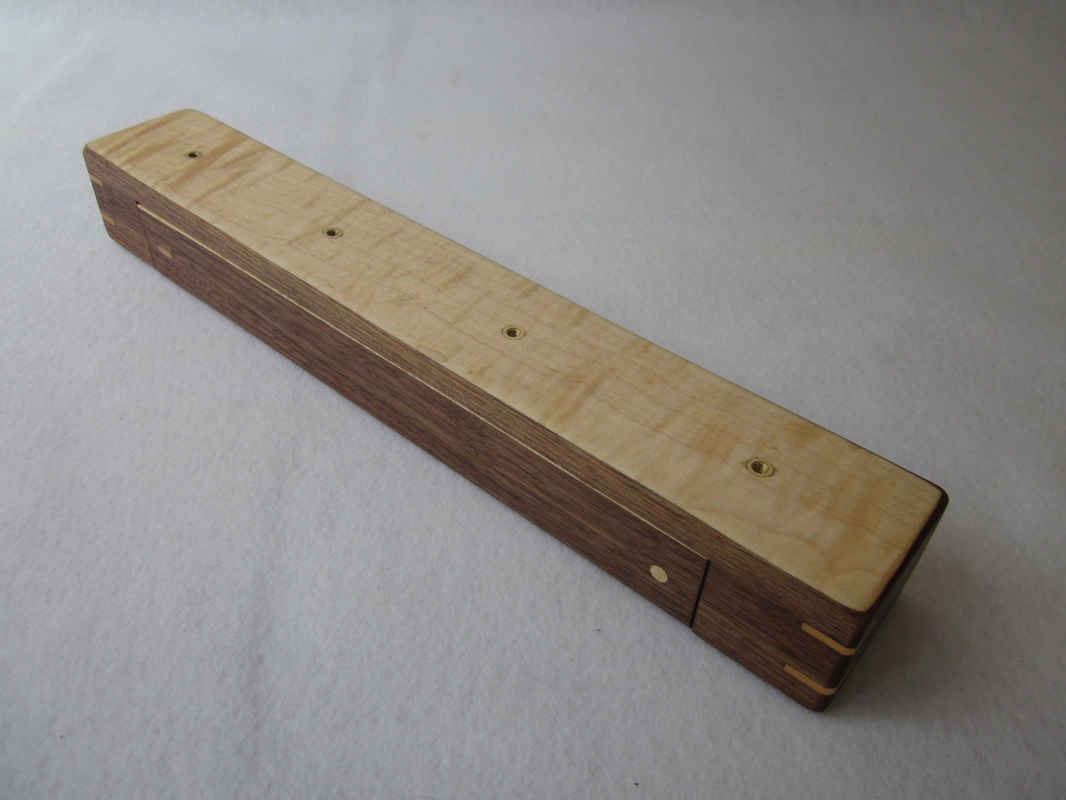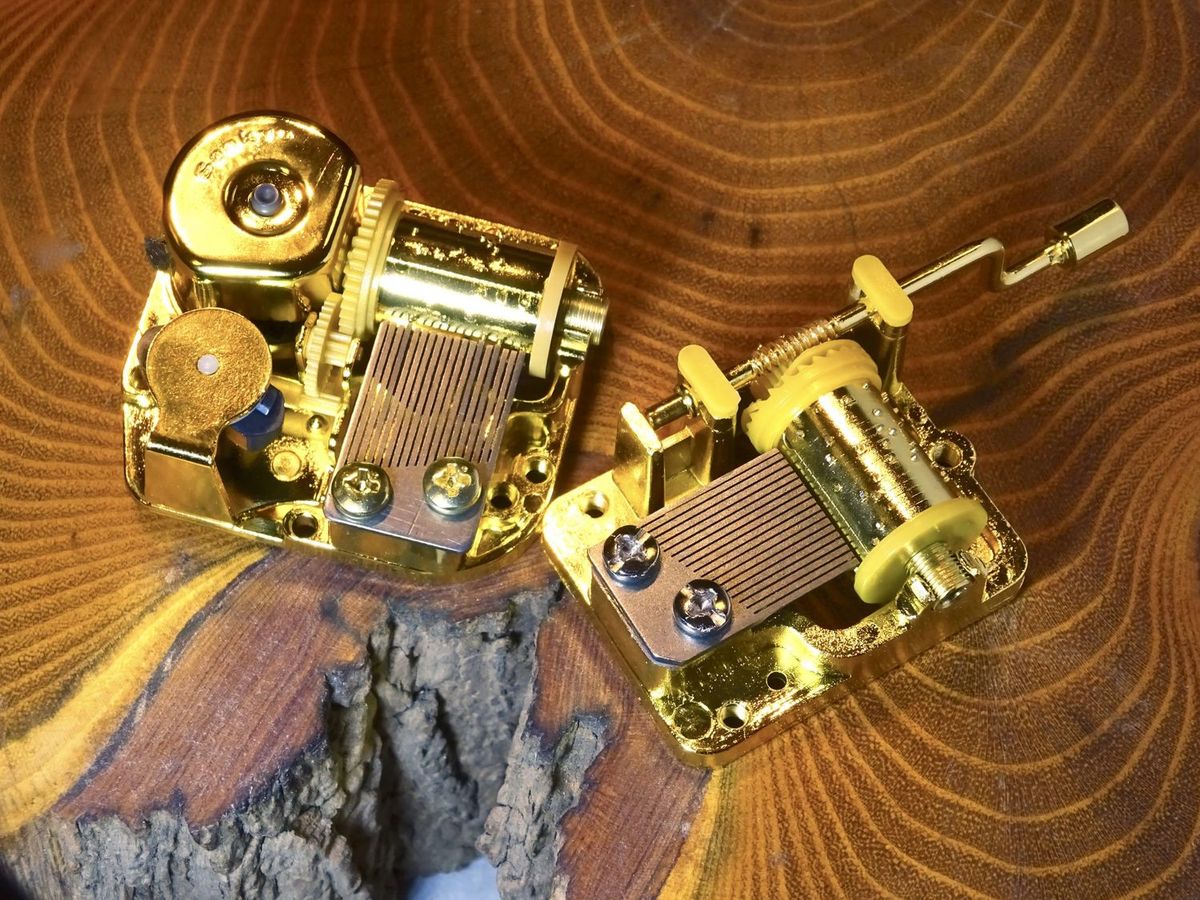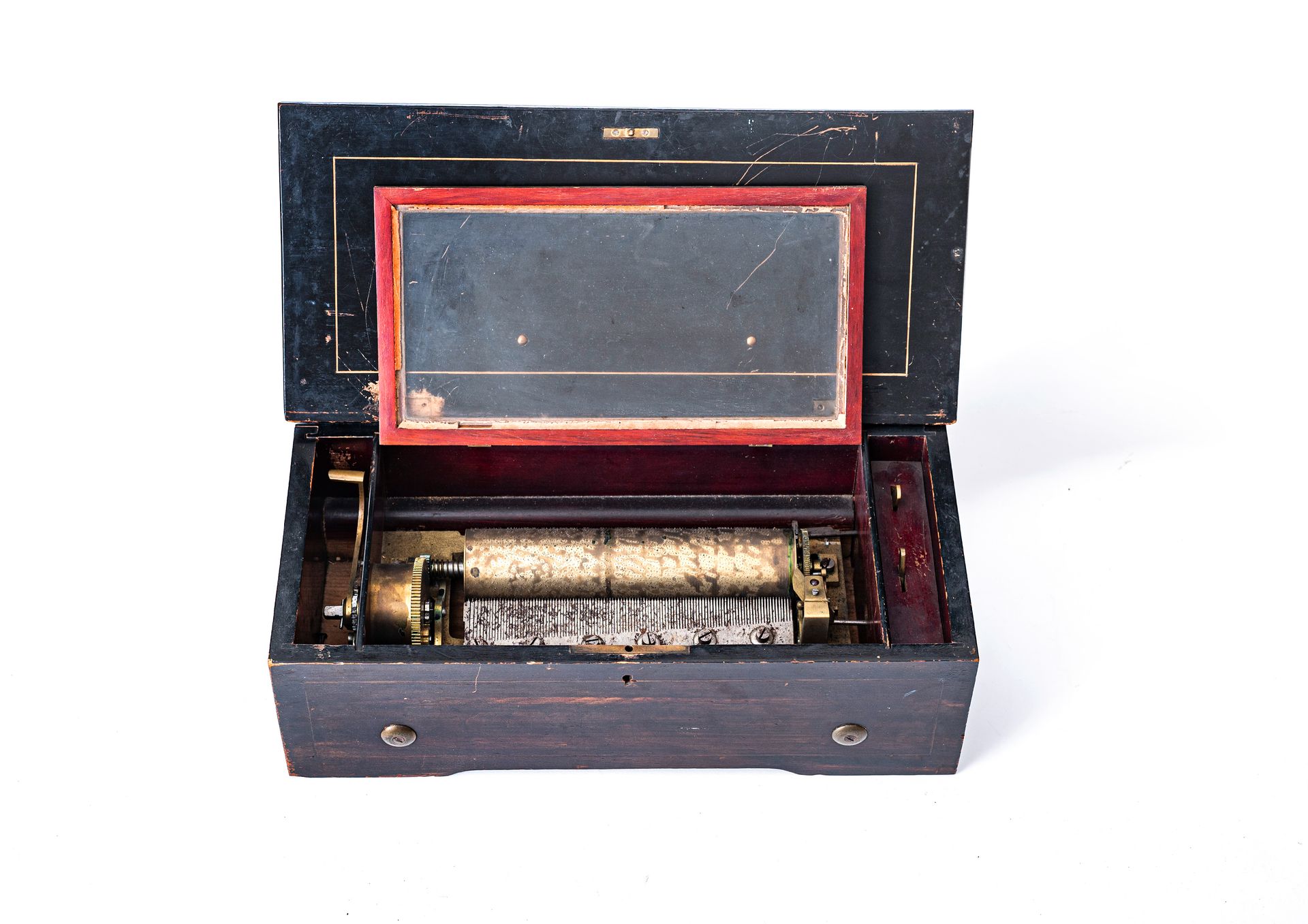Home>Devices & Equipment>Music Box>What Is The Device Called That Makes The Music In A Music Box
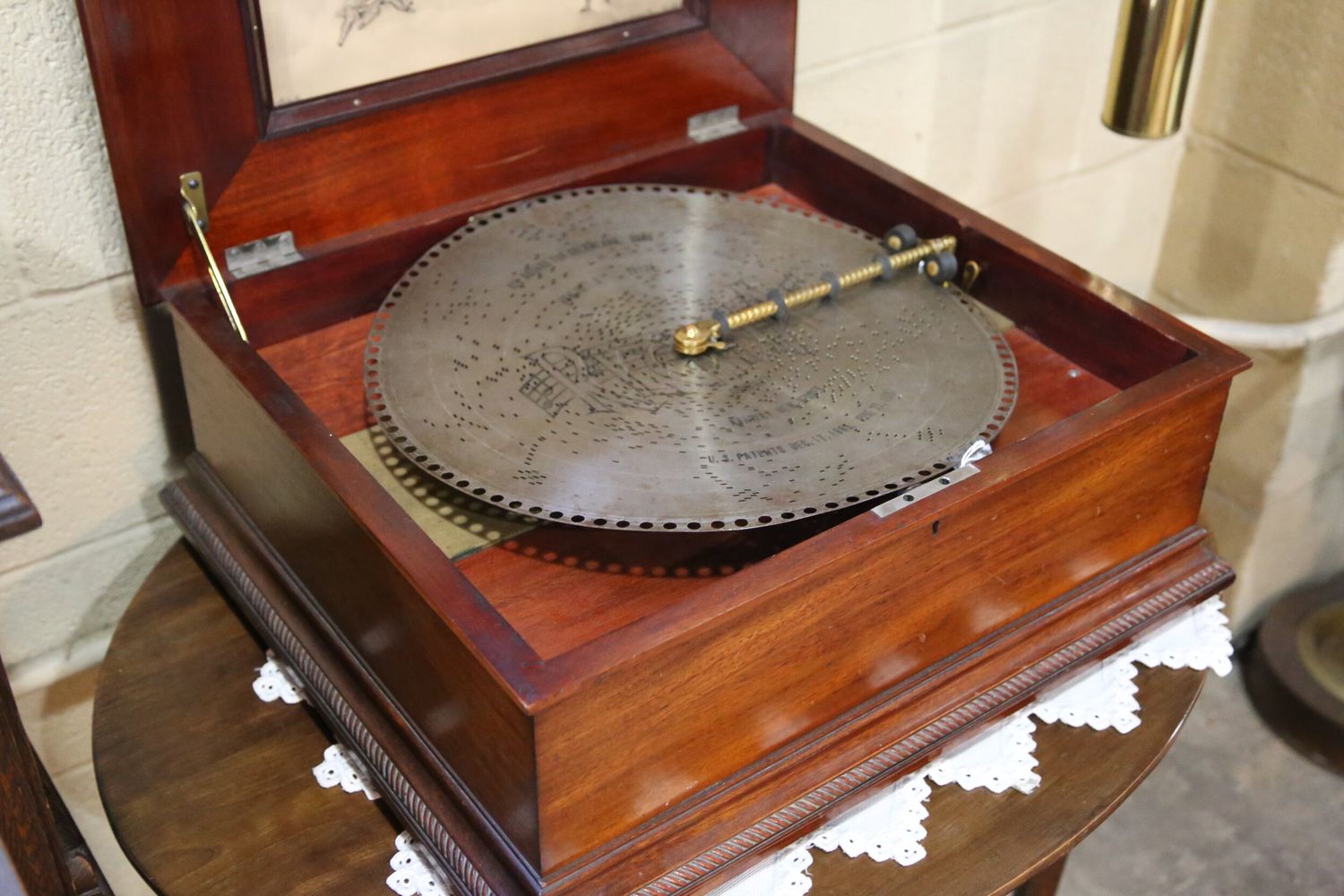

Music Box
What Is The Device Called That Makes The Music In A Music Box
Modified: January 22, 2024
Discover the enchanting world of music boxes and learn about the device that creates the captivating melodies inside. Unravel the mystery of the music box and its mesmerizing music.
(Many of the links in this article redirect to a specific reviewed product. Your purchase of these products through affiliate links helps to generate commission for AudioLover.com, at no extra cost. Learn more)
Table of Contents
Introduction
Music boxes have captivated people for centuries with their enchanting melodies and delicate craftsmanship. These delightful devices have the power to transport us to a world of nostalgia and whimsy, evoking fond memories and stirring emotions.
In simplest terms, a music box is a mechanical device that produces music. It is a unique combination of engineering precision and artistic expression. The history of music boxes dates back to the late 18th century, and they have since evolved into a wide variety of designs and styles.
Whether nestled on a shelf, adorning a jewelry box, or handed down as a cherished heirloom, music boxes continue to hold a special place in our hearts. In this article, we will explore the fascinating history of music boxes, delve into the inner workings of these intricate devices, and unveil the mysterious mechanism that brings the melodies to life.
So, sit back, relax, and let us embark on a melodious journey into the world of music boxes. Prepare to be enchanted by the stories and secrets behind these tiny, magical instruments.
The History of Music Boxes
The origins of the music box can be traced back to the late 18th century in Switzerland, which quickly became the epicenter of music box production. The invention of the music box is often credited to Swiss watchmaker Antoine Favre, who created a simple mechanical device that played a tune using a set of metal pins on a revolving cylinder.
Initially, music boxes were exclusively enjoyed by the wealthy elite due to their intricate craftsmanship and high cost. However, as the demand grew, music box production expanded, making them more accessible to a wider range of people.
In the 19th century, music boxes gained popularity across Europe and became a highly sought-after collector’s item. They were crafted with intricate designs, often featuring hand-painted scenes or elaborate wood carvings. Some music boxes were even equipped with automaton figures that danced or moved along with the music, adding an element of whimsy.
During the Victorian era, music boxes reached their peak of popularity. They became a symbol of elegance and refinement and were frequently given as gifts. Music boxes were often incorporated into other objects, such as jewelry boxes and snuffboxes, further enhancing their appeal.
As technology advanced, the production of music boxes became more streamlined. In the early 20th century, metal discs replaced the cylinders, allowing for a greater variety of tunes to be played. The music box industry faced challenges during the advent of recorded music, but enthusiasts and collectors kept the tradition alive.
Today, music boxes have evolved beyond their traditional form. Modern versions may include digital music players or incorporate modern designs and materials. Despite these advancements, the charm and allure of the original mechanical music boxes continue to captivate music lovers around the world.
The history of music boxes is a testament to the enduring appeal of these enchanting devices. They have endured for centuries, providing a source of joy and fascination to countless individuals.
How a Music Box Works
Although they may seem like magical boxes of melodies, music boxes operate on the principles of mechanical engineering. Understanding how a music box works unveils the intricate mechanisms behind its enchanting tunes.
At the heart of a music box is a rotating cylinder or disc that is studded with strategically placed pins or bumps. These pins or bumps are responsible for creating the specific sequence of notes that make up the melody. As the cylinder or disc rotates, the pins or bumps pluck a set of tuned metal teeth or tines, producing musical notes.
The mechanism that translates the motion of the cylinder or disc into the striking of the metal teeth is called the comb. The comb is a long, thin strip of metal equipped with multiple teeth of varying lengths. Each tooth corresponds to a specific musical note, creating a range of pitches.
When the pins or bumps on the cylinder or disc pass over the comb, they lift the corresponding teeth, causing them to vibrate. These vibrations produce the musical notes, creating a melody. The comb is usually made of high-quality steel or brass to ensure clear and resonant sound.
To regulate the speed of the rotating cylinder or disc, a governor is employed. The governor, typically in the form of a fan or flywheel, controls the rate at which the cylinder or disc rotates. This ensures that the pins or bumps strike the comb at a consistent tempo, resulting in a smooth and harmonious melody.
In more complex and elaborate music boxes, additional mechanisms may be present. These can include features such as a bell accompaniment, drumbeat effect, or even the movement of automaton figures synchronized with the music.
It’s important to note that not all music boxes operate using the same mechanism. Cylinder music boxes, disc music boxes, and even modern electronic music boxes may have variations in their designs and mechanisms. However, the basic principle of using pins or bumps to create vibrations and musical notes remains consistent across different types of music boxes.
Next time you listen to the ethereal sound of a music box, take a moment to appreciate the ingenious mechanical workings that bring the melodies to life. It is a testament to the skill and craftsmanship that goes into creating these delightful devices.
Components of a Music Box
A music box is composed of several essential components that work together to create its enchanting melodies.
- Cabinet: The cabinet is the outer shell or case of the music box. It can be made of various materials, such as wood, metal, or glass. The cabinet not only provides protection for the internal components but also adds aesthetic appeal to the music box.
- Cylinder or Disc: The cylinder or disc is the main component responsible for producing the music. In traditional music boxes, the cylinder features pins or bumps that pluck the metal teeth of the comb to create the melodies. In disc music boxes, the rotating disc has bumps or slots that activate the comb.
- Comb: The comb is a long, thin strip of metal with multiple teeth of different lengths. Each tooth corresponds to a specific musical note. When the pins or bumps on the cylinder or disc lift the teeth, they vibrate, producing the distinct tones of the melody. The comb is often made of high-quality steel or brass to ensure clear and resonant sound.
- Governor: The governor is a mechanism that regulates the speed of the rotating cylinder or disc. Usually in the form of a fan or flywheel, the governor ensures a consistent tempo by controlling the rate at which the pins or bumps strike the comb. This helps to produce a smooth and harmonious melody.
- Spring: The spring is a critical component that powers the music box. It stores potential energy when wound up and releases it gradually to drive the rotation of the cylinder or disc. The size and tension of the spring determine the duration and strength of the music playback.
- Drive Mechanism: The drive mechanism transmits the energy from the wound-up spring to the rotating cylinder or disc. It consists of gears and levers that create the necessary motion to activate the music-playing mechanism.
- Soundboard: The soundboard is a resonating surface usually made of wood. It enhances the sound produced by the vibrating metal teeth of the comb, amplifying and enriching the music.
- Accessories: Some music boxes may include additional accessories or features that add to their allure. These can include decorative elements like inlaid patterns, hand-painted scenes, or intricate carvings on the cabinet. Some music boxes may also have compartments for storing jewelry or other small keepsakes.
These components work harmoniously to create the delightful music box experience, blending precision engineering with artistic craftsmanship. Each element plays a vital role in producing the magical melodies that bring joy to our hearts.
The Device that Makes the Music
The device responsible for producing the mesmerizing music in a music box is the comb. The comb is a crucial component that creates the distinct tones and melodies that captivate listeners.
The comb, often made of high-quality steel or brass, is a thin strip with multiple teeth of varying lengths. Each tooth corresponds to a specific musical note. When the pins or bumps on the rotating cylinder or disc lift the teeth, they vibrate, producing beautiful tones.
The comb’s design and construction are critical to achieving the desired sound quality. Skilled artisans carefully tune the comb by adjusting the lengths and positions of the teeth. They meticulously file and shape the teeth to ensure precise pitch and clarity.
While traditional music boxes typically have a single comb, more elaborate and complex models can feature multiple combs. These multi-comb music boxes allow for a wider range of notes and harmonies, enriching the musical experience.
The vibration of the teeth on the comb produces a delicate sound. To enhance the volume and resonance of the music, a soundboard is incorporated into the music box. The soundboard is a resonating surface, often made of wood, that amplifies and enriches the vibrations from the comb, resulting in a more vibrant and full-bodied sound.
It is important to note that the comb and its teeth are delicate and require regular maintenance to preserve their quality. Dust and debris can accumulate on the teeth, affecting their ability to vibrate and produce clear tones. This is why frequent cleaning and proper handling of the music box are necessary to ensure optimal sound performance.
As music box technology has evolved, so too has the mechanism that controls the comb. In many modern music boxes, the comb is electronically controlled, allowing for greater precision and versatility in producing different melodies. These electronic music boxes often come with pre-recorded tunes and even the ability to connect to external devices for a personalized music experience.
The comb is the heart and soul of a music box. Its intricate design and craftsmanship bring forth melodies that stir our emotions and transport us to a world of enchantment. Whether it’s a simple tune or a complex symphony, the comb is the device that makes the music in a music box truly magical.
Conclusion
Music boxes have a timeless charm that continues to captivate hearts and minds. From their humble beginnings in Switzerland to their widespread popularity across the globe, music boxes have brought joy and enchantment to countless individuals.
Understanding the history of music boxes gives us insight into their evolution and significance as cultural artifacts. The intricate workings of a music box, from the rotating cylinder or disc to the vibrating comb, showcase the intersection of artistry and engineering.
Each component plays a vital role in creating the magical melodies that resonate within our souls. The carefully crafted comb and its vibrating teeth produce the ethereal sound that transports us to a world of beauty and nostalgia.
As technology advances, music boxes continue to adapt and innovate. Modern music boxes incorporate electronic mechanisms that offer a wide range of melodies and customization options. Yet, the charm of traditional music boxes remains unmatched, connecting us to a rich heritage of craftsmanship and elegance.
Whether to grace a special occasion, commemorate a treasured memory, or simply uplift our spirits, music boxes weave magic into our lives. Their melodies bring us solace in moments of solitude and inspire a sense of wonder as we witness the delicate dance between mechanics and music.
So, let the enchanting melodies of a music box fill your heart, transporting you to a world where time stands still and imagination reigns. Discover the beauty and intricacy housed within these small, captivating devices and allow them to ignite your imagination and touch your soul.
Music boxes are more than just devices that make music – they are vessels of emotion, wonder, and nostalgia. Let them continue to serenade us with their melodic stories for generations to come.

